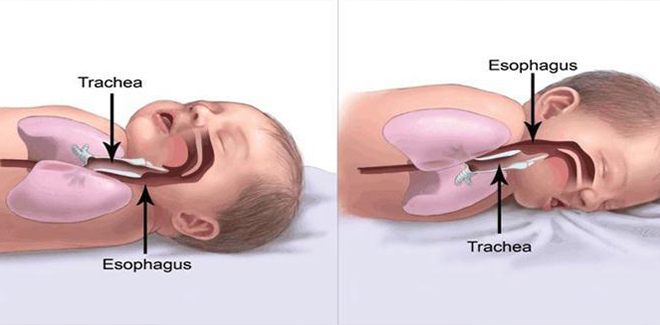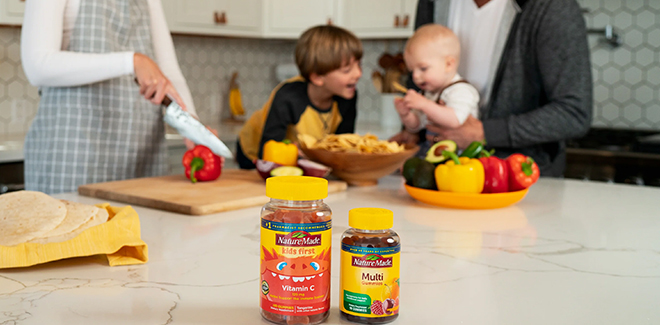Feeding a baby with formula requires careful preparation and attention to detail to ensure that the baby receives the appropriate amount and type of formula for their age and needs. Formula should always be prepared according to the manufacturer’s instructions, using clean and sterilized bottles and nipples. It is important to never dilute formula or add any other substances to it, as this can lead to nutrient deficiencies and other health problems. Additionally, it is important to pay attention to the baby’s cues and feeding patterns, as some babies may require more or less formula than others. Overall, formula can be a safe and effective way to provide babies with the nutrition they need to grow and thrive, but it is important to consult with a healthcare provider about the best type and amount of formula for your baby.
Pros of baby formula feeding
Formula feeding can provide a number of benefits for both babies and parents. Some of the potential pros of baby formula feeding include:
- Convenience: Formula feeding can be more convenient than breastfeeding, as it allows for more flexibility in the baby’s feeding schedule and can be easily managed by multiple caregivers.
- Accessibility: Formula feeding can be a good option for mothers who are unable to breastfeed or who choose not to breastfeed for personal or medical reasons.
- Nutritional consistency: Formula is formulated to provide a consistent and balanced source of nutrition for babies, ensuring that they receive all the necessary nutrients they need to grow and develop.
- Health benefits: In some cases, formula feeding may provide health benefits for babies, such as reducing the risk of certain infections or allergies.
- Bonding opportunities: Formula feeding can provide opportunities for bonding and closeness between the baby and caregiver, similar to breastfeeding.
It is important to note that while formula feeding can provide a number of benefits, it may also have some potential downsides, such as the expense of formula, the time and effort required for preparation, and the potential for certain health risks. Ultimately, the decision to formula feed or breastfeed should be made based on individual circumstances and in consultation with a healthcare provider.
Cons of baby formula feeding
While baby formula feeding can provide benefits, it also has some potential downsides. Some of the potential cons of baby formula feeding include:
- Cost: Formula can be expensive, and the cost of formula feeding over time can add up significantly.
- Preparation time: Preparing formula requires time and effort, including sterilizing bottles and mixing and warming the formula.
- Potential health risks: While formula is formulated to provide a balanced source of nutrition for babies, some types of formula may carry a higher risk of certain health problems, such as allergies or infections.
- Lack of immune protection: Breast milk contains antibodies that can help protect babies from infection and illness, which formula does not provide.
- Potential for reduced bonding: While formula feeding can provide opportunities for bonding between the baby and caregiver, it may not offer the same level of intimacy and closeness as breastfeeding.
- Flavor and odor: Some babies may not like the flavor or smell of powder formula, which can make feeding more difficult.
- Potential for measurement errors: Measuring the correct amount of powder formula can be challenging, and small variations in the amount of powder can affect the baby’s nutritional intake.
- Inconsistent mixing: Powder formula can be more difficult to mix consistently than other types of formula, and may result in clumps or uneven distribution of nutrients.
It is important to note that the decision to formula feed or breastfeed should be made based on individual circumstances and in consultation with a healthcare provider. Additionally, parents and caregivers should take steps to ensure that formula is prepared and administered safely and that babies receive proper nutrition and care.

Feeding the baby with formula or breast milk
The decision to feed a baby with formula or breast milk is a personal one that should be based on individual circumstances. Both breast milk and formula can provide the necessary nutrition for a baby to grow and develop, but there are some differences between the two that may influence the decision.
Breast milk is considered the ideal source of nutrition for babies, as it contains antibodies that can help protect against infection and illness, and it is specifically tailored to meet a baby’s changing nutritional needs. Breastfeeding can also provide opportunities for bonding and closeness between the baby and caregiver.
Formula, on the other hand, can provide a consistent and balanced source of nutrition for babies, and it can be a good option for mothers who are unable to breastfeed or who choose not to breastfeed for personal or medical reasons. Formula can also be more convenient than breastfeeding, as it allows for more flexibility in the baby’s feeding schedule and can be easily managed by multiple caregivers.
Ultimately, the decision to formula feed or breastfeed should be based on individual circumstances such as the mother’s health and preferences, the infant’s nutritional needs, and other factors such as work or childcare arrangements. It is important to consult with a health care provider about the best feeding options for your child and take steps to ensure that your child receives proper nutrition and care.
But in the end, you should know that the best food for babies is breast milk, which contains antibodies that increase the immune system of the baby and is one of the important things for the early development of the baby’s brain.
How to prepare milk powder for a baby
Preparing milk powder for a baby requires careful attention to hygiene and safety to ensure that the baby receives the proper nutrition and does not become ill. Here are the general steps to prepare milk powder for a baby:
- Wash your hands thoroughly with soap and water before handling the milk powder, the feeding bottles, and the nipples.
- Sterilize the feeding bottles and nipples in boiling water for at least 5 minutes or use a sterilizer.
- Boil water and let it cool down to around 70-80°C (158-176°F).
- Measure the recommended amount of water and powder according to the instructions on the formula container, using the provided scoop.
- Add the powder to the water and shake the bottle gently until the powder is fully dissolved.
- Check the temperature of the formula by testing a few drops on your wrist. It should feel lukewarm, not hot.
- Feed the baby immediately after preparation. Discard any leftover formula after 1 hour.
It is important to follow the instructions on the formula container carefully and to use the recommended amount of powder and water to ensure that the baby receives the proper nutrition. Additionally, it is important to store the formula in a cool, dry place and to discard any expired or spoiled formula. By taking these steps, parents and caregivers can ensure that their little ones receive safe and nutritious formula.

Safe and effective administration of formula to ensure baby’s growth
Safe administration of formula is essential for ensuring a baby’s growth and development. Here are some tips to help ensure safe administration of formula:
- Always use clean and sterilized feeding bottles and nipples.
- Prepare formula according to the instructions on the formula container, using the recommended amount of powder and water.
- Check the temperature of the formula before feeding it to the baby. It should be lukewarm, not hot.
- Feed the baby immediately after preparation and discard any leftover formula after 1 hour.
- Pay attention to the baby’s feeding cues and patterns. Some babies may need more or less formula than others, so it is important to monitor their intake and adjust as needed.
- Store any unused formula in a cool, dry place, and follow the expiration date on the formula container.
In addition to safe administration, ensuring the baby’s growth requires providing proper nutrition and meeting their changing needs as they grow. It is important to consult with a healthcare provider about the best type and amount of formula for the baby’s age and needs, and to introduce solid foods at the appropriate time. Additionally, providing a safe and nurturing environment, regular check-ups, and plenty of love and attention can help ensure a baby’s growth and development.













4 Responses
How to safely prepare and store powdered milk?
To safely prepare formula, start with clean hands and use sterilized bottles and nipples. Follow the directions on the formula package for mixing ratios, usually using boiled and cooled water. Make sure the water is at the recommended temperature (usually around 100°F or 37°C) before mixing with formula. Once prepared, use the formula within one hour at room temperature or within 24 hours in the refrigerator. Do not reheat powdered milk in the microwave as it can cause hot spots. Instead, use a heating bottle or hot water bath to bring it to the desired temperature.
How do I choose the right formula for my baby?
The choice of formula depends on the specific needs of your baby. Most healthy, full-term infants can be fed a standard cow’s milk-based formula. However, if your baby has special dietary needs or allergies, consult your pediatrician for a formula recommendation. There are also special milk powders such as hypoallergenic, containing soy or lactose-free for babies with special dietary needs. Your pediatrician can guide you in choosing the best formula for your baby’s unique situation.